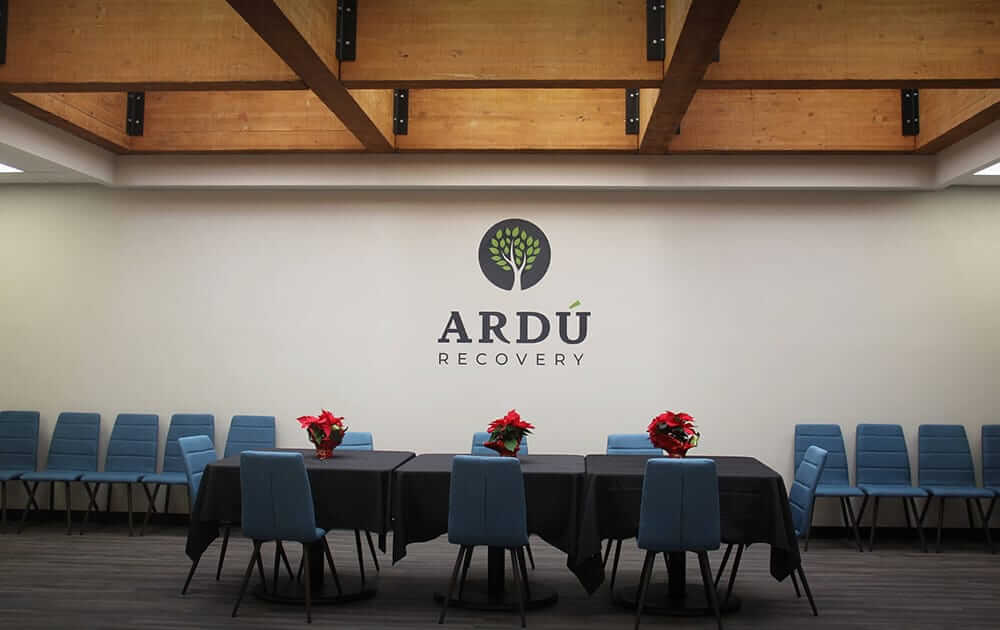Written by Brandon Okey. Mina Draskovic, B.Psy., reviewed this content for accuracy.
Xylazine is a veterinary tranquilizer increasingly found in illegal drugs in the U.S. It is often mixed with fentanyl and other opioids, which increases the risks of adverse effects and overdose.
A 2022 article published in Cureus revealed that from 2015 to 2020, the percentage of all drug overdose deaths involving xylazine increased from 2% to 26% in Philadelphia. The highest use of xylazine was observed in Philadelphia (25.8% of deaths), followed by Maryland (19.3%) and Connecticut (10.2%).
Ardu offers specialized detox services designed specifically for xylazine withdrawal. We provide medical supervision, customized treatment plans, and ongoing support to ensure a safe and effective recovery process.
You don’t have to face addiction alone. Ardu’s xylazine rehab center supports you through the withdrawal process and guides you toward lasting recovery.








Xylazine withdrawal can be extremely challenging. Some people experience mild withdrawal symptoms, while others struggle with severe and potentially dangerous withdrawal that requires medical supervision to manage safely.
Common symptoms of xylazine withdrawal include:
If you or someone you know is experiencing withdrawal, seek immediate help from healthcare providers to ensure a safe and managed recovery.
Xylazine is a medication strictly intended for veterinary use and has not been deemed safe or appropriate for human consumption by the Food and Drug Administration (FDA). People become addicted to xylazine mainly because it is used as a cutting agent—a substance mixed into opioid drugs such as heroin and fentanyl to increase their potency. Xylazine is mixed with these substances to enhance their depressive effects on the central nervous system, creating a more intense “high” for the user.
Xylazine acts on the brain’s reward system, causing feelings of pleasure and euphoria that make you want to keep using it. Over time, the brain gets used to xylazine and needs more of it to feel normal, leading to tolerance and dependence. If you try to quit, you might experience withdrawal symptoms.
Xylazine also impairs judgment and lowers inhibitions, making it harder to stop using despite negative consequences. When combined with other depressants, xylazine can slow or stop breathing, increasing the risk of overdose and death.
Repeated xylazine use can change the brain’s structure and function, especially in areas related to memory, learning, and impulse control. As the brain becomes reliant on the drug to feel normal, this makes it even harder to quit. The longer you use xylazine, the more difficult it becomes to overcome the addiction.
There are many reasons why people start using xylazine and why their use often spirals into dependence and addiction:
With evidence-based treatments tailored to your specific situation, our team will guide you through xylazine detox, support you through withdrawal, and provide the tools to overcome cravings.
You don’t have to let xylazine control your life any longer—reach out to our specialized detox center today and take the first step towards reclaiming your health, happiness, and future.
Xylazine addiction poses a significant challenge, often compounded by its involvement in polysubstance abuse scenarios. It isn’t easy to kick off, but that’s a battle we’re prepared to win at Ardu Recovery Center. Our xylazine detox program combines medical expertise and holistic approaches to addiction. With a focus on safety, support, and personalized care, we provide a fruitful environment for your successful recovery journey.
So why choose Ardu?
Ardu changed my life in so many ways. I truly am grateful for every staff member there. They are warm, caring, understanding and inviting. I truly believe that i wouldn’t be where i am today without them. Every single person there fought for me when i didn’t know how to fight for myself.
Our comprehensive, integrated approach to addiction recovery guides you seamlessly from detoxification through long-term support. We tailor our programs to address both the physical and psychological aspects of xylazine dependence. This multi-modal approach includes:
Detox is just the first step in your recovery journey. Our team works closely with you to develop a comprehensive aftercare plan, connecting you with the necessary resources and support systems to maintain your sobriety and prevent relapse.
After completing detox, the next crucial step is entering a comprehensive rehabilitation program. Our team continues with personalized care and support, tailoring evidence-based therapies, counseling sessions, and specialized interventions to address your unique needs and level of xylazine addiction.
We offer both inpatient and outpatient treatment options to accommodate your specific circumstances. Inpatient rehab provides a structured, immersive environment with round-the-clock care and supervision where you can focus on your recovery without external distractions or triggers. Outpatient programs offer more flexibility, enabling you to receive treatment while maintaining your daily responsibilities.
Regardless of the program you choose, our goal is to equip you with the necessary tools and coping strategies to sustain long-term sobriety. Through a combination of individual and group therapies, medication management (if needed), and holistic approaches, we support your transition to a fulfilling, xylazine-free life.
To enroll in an Ardu Xanax detox program, contact Ardu Recovery Center online or via phone (801-810-1234). Our treatment providers will work with you to find a path to recovery that works for you during the detox process and beyond. Read our admissions process page and contact our admissions team.
If you want to verify your insurance coverage and gather more information on financial assistance, visit our insurance verification page.
The growing presence in the illegal drug market suggests that more people are being exposed to xylazine and its potent sedative effects.
The Centers for Disease Control and Prevention (CDC) reports that xylazine is becoming more prevalent in illegal drug supply across the U.S. The percentage of overdose deaths involving fentanyl-xylazine mixtures jumped from 3% to 11% between January 2019 and June 2022.
A 2023 review proposed that xylazine use is linked to severe side effects, such as skin ulcers, drowsiness, and respiratory depression. A combination of xylazine with other drugs, especially opioids, makes it challenging to manage and treat xylazine and opioid overdoses.
Xylazine addiction can lead to life-threatening situations such as an overdose. A cross-sectional study conducted by Arizona State University scholars revealed that xylazine-related overdose deaths have been reported in at least 43 states. Xylazine-involved overdose deaths in the US rose from 102 in 2018 to 3468 in 2021.
The study also found that 99.1% of xylazine-related overdose deaths involved fentanyl. When combined with fentanyl or heroin, the risk of overdose increases significantly because of the unpredictable and potent nature of the mixed substances.
Signs of a xylazine overdose may include:
If you suspect someone is experiencing a xylazine overdose, call emergency services immediately.
After receiving medical attention, reach out to Ardu Recovery Center to help your loved one safely overcome their addiction and prevent future life-threatening situations.

Brandon Okey is the co-founder of Ardu Recovery Center and is dedicated to empowering people on their journey to sobriety.
There are currently no FDA-approved medications for reversing the effects of xylazine. In cases where xylazine is mixed with illicit opioids such as fentanyl or heroin, naloxone may partially reverse the respiratory depression caused by the opioid component. Naloxone is typically used for opioid overdose reversal, but it will not reverse the effects of xylazine itself.
To manage xylazine intoxication or polysubstance overdose crises, find a professional addiction center such as Ardu Recovery Center. We offer supportive care, symptom management, and specialized treatment facilities to curb your xylazine addiction and lead you to the path of sobriety.
Xylazine is a veterinary sedative and analgesic medication that was originally synthesized by Bayer AG, a German pharmaceutical company, in the 1960s. It belongs to the class of alpha-2 adrenergic agonists, potent non-opioid sedatives, and nervous system depressants. While intended for animal use, xylazine has increasingly been detected in illicit drug supplies, often as an adulterant in heroin, fentanyl, and other illicit opioids.
The sedative and euphoric effects of xylazine can last for 6–8 hours or longer, with some symptoms of withdrawal potentially persisting for up to 24 hours or more. The recovery time from xylazine intoxication or overdose is influenced by the dose, route of administration, and the individual’s health status.
Xylazine can be dissolved in aqueous solvents such as water or saline solutions, depending on the intended route of administration. When used illicitly, xylazine powder may be dissolved and injected, or mixed into other drugs like heroin or fentanyl pills/powder. Proper harm reduction measures are crucial when handling unknown drug mixtures.
As an alpha-2 adrenergic agonist, xylazine belongs to the same class of potent sedatives and analgesics as drugs such as clonidine, detomidine, and medetomidine. These medications are intended for veterinary use and produce similar effects (central nervous system depression, sedation, and respiratory depression) if used in humans. Polysubstance use involving xylazine and illicit drugs such as opioids poses heightened risks for fatal overdoses.
The duration of action for xylazine is influenced by dose and route of administration. When used as a veterinary sedative via intramuscular injection, the effects typically last 1–2 hours. If injected intravenously, the sedative and respiratory depressant effects of xylazine can persist for up to 4-6 hours or longer in some cases. Chronic xylazine use may lead to physical dependence and more severe withdrawal symptoms.
Xylazine is not meant for human consumption and has many dangers, especially in combination with illicit opioids such as heroin or fentanyl powder. The presence of xylazine in the illicit drug market has contributed to the polysubstance overdose crisis.
Some key risks include:
Xylazine is a veterinary drug that has not been approved for human use by the FDA and should never be consumed by humans under any circumstances.
Xylazine is safe for cats when administered under veterinary supervision and at appropriate dosages. Make sure to follow veterinary instructions and recommendations because improper use or overdose leads to adverse effects, including respiratory depression and hypotension.
Healthcare providers, public health departments, law enforcement agencies, and harm reduction organizations play a crucial role in addressing the threat of xylazine, promoting education, and supporting people affected by its misuse.
Malayala, S. V., Papudesi, B. N., Bobb, R., & Wimbush, A. (2022). Xylazine-Induced Skin Ulcers in a Person Who Injects Drugs in Philadelphia, Pennsylvania, USA. Cureus, 14(8). https://doi.org/10.7759/cureus.28160
What You Should Know About Xylazine. (2024, May 16). Overdose Prevention. https://www.cdc.gov/overdose-prevention/about/what-you-should-know-about-xylazine.html?CDC_AAref_Val=https://www.cdc.gov/drugoverdose/deaths/other-drugs/xylazine/faq.html
Ayub, S., Parnia, S., Poddar, K., Bachu, A. K., Sullivan, A., Khan, A. M., Ahmed, S., & Jain, L. (2023). Xylazine in the Opioid Epidemic: A Systematic Review of Case Reports and Clinical Implications. Cureus, 15(3). https://doi.org/10.7759/cureus.36864
Cano, M., Daniulaityte, R., & Marsiglia, F. (2024). Xylazine in Overdose Deaths and Forensic Drug Reports in US States, 2019-2022. JAMA Network Open, 7(1), e2350630. https://doi.org/10.1001/jamanetworkopen.2023.50630
Can meditation therapy help with my addiction?
Will I ever beat my addiction?
Can integrative medicine help my addiction?
Alternative medicine addiction treatment at Ardu